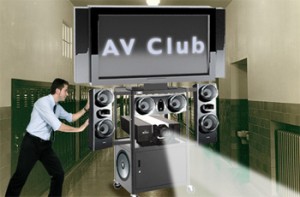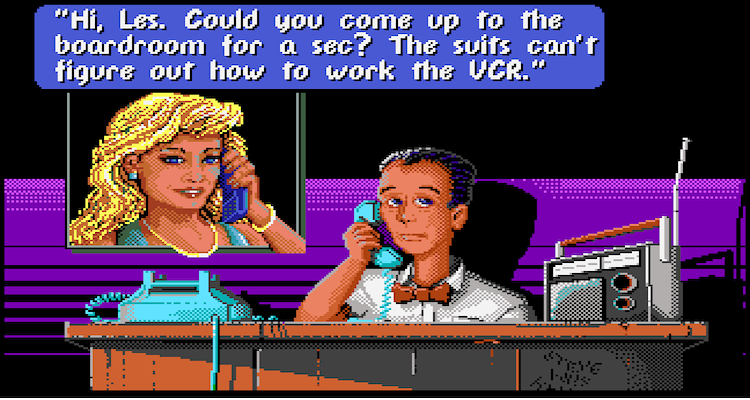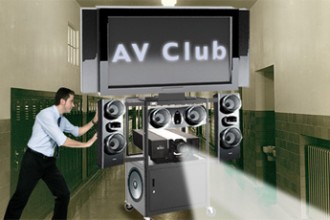01000001 01010110
 One of the more important skills in our line of work is the ability to recognize nuances in the human experience as it intersects with technology. Further, one kicks that skill level up a notch by making correct correlations of that experience to technical determinations that ultimately resolve a particular need. The inverse is also true — evaluate a range of technical solutions and help folks adopt them for a better experience. Nowadays this skill has less to do with finding options to consider and more to do with sorting through the vast variety of data that should be considered.
One of the more important skills in our line of work is the ability to recognize nuances in the human experience as it intersects with technology. Further, one kicks that skill level up a notch by making correct correlations of that experience to technical determinations that ultimately resolve a particular need. The inverse is also true — evaluate a range of technical solutions and help folks adopt them for a better experience. Nowadays this skill has less to do with finding options to consider and more to do with sorting through the vast variety of data that should be considered.
While the “data” (digital information, if you will) part is a significant emerging part of AV, the concept of the various forms it takes is not. It’s the modern day version of content in a library of videotapes, with metadata for each tape on index cards and a way to manage those cards in the form of a master file drawer sorted by title. AV technology managers helped users in that era by selecting the appropriate VTR equipment, directing them to content sources and working through logistics of using it all in the classroom. But that was then, and this is the now.
Encoded AV: Remember through the encoding process of sight and sound, the resulting data is a representation of the original analog forms. Unless, of course, the native content sources are truly digital, like PowerPoint slides. Either way, these data sets tend to be large and thus are fodder for technical compression schemes. Add to that the vast array of methods (and not natively compatible) of doing that encoding and the result is an alphabet soup of file types. So there’s plenty here to get a handle on in advising the optimum end user case.
AV Metadata: This AV data is the important glue that takes the sometimes very large AV content data sets and provides uniform cataloging for quick access. Going considerably further than the index card per video of old, it’s becoming more common place to have the metadata down to the chapter, if not frame, level. Also, keep in mind the metadata fields will vary with the format of the content (e.g., is it a simple video or rich media with synchronized slides and video?). As all things video move online, the options here will grow exponentially.
Management Data: Perhaps the data we techies most characteristically associate with the term ‘data,’ these fall into a range as broad as the field of AV itself. Whether it’s a remote management tool for a specific category of product (say a brand of CODEC) or an equipment inventory/maintenance log, there is a long list of such tools to of which to avail oneself. In fact, there’s been an emergence of specialized online portals that bundle these through a central management page. And it’s a good thing they are, as it’s not just the data that is getting centralized, but job tasks as well.
Through the process of applied human interface of audiovisual technology, the practitioner regularly handles various forms of AV data. Some of this data is related to the encoded end user’s content, whether it’s prepared in advance or live. And, a different kind of AV data is used to categorize metadata for that content, through input by the user and/or technology manager. Lastly, data is generated through various AV management tools to optimize the growing number of backend systems. Here’s the take away for the AV Club: AV data is not AV data, which is also not AV data!
The views expressed in this column do not necessarily reflect the views of the authors’ employer(s), past or present.
 Greg Bronson, CTS-D, applies AV technologies in the development of innovative learning spaces for higher education. Greg spent the first 10 years of his career as AV technician and service manager, with the past 12+ years as an AV system designer and project manager. Bronson currently works for Cornell University and has also worked for two SUNY (State University of New York) campuses as well as a regional secondary education service depot. Bronson is the originator of concept for InfoComm’s Dashboard for Controls and has had completed projects featured in industry publications. You can reach Greg at gregthetechie@netscape.net
Greg Bronson, CTS-D, applies AV technologies in the development of innovative learning spaces for higher education. Greg spent the first 10 years of his career as AV technician and service manager, with the past 12+ years as an AV system designer and project manager. Bronson currently works for Cornell University and has also worked for two SUNY (State University of New York) campuses as well as a regional secondary education service depot. Bronson is the originator of concept for InfoComm’s Dashboard for Controls and has had completed projects featured in industry publications. You can reach Greg at gregthetechie@netscape.net





